
|   |

|   |
Klassical, Kontemporary and Kindling - Shveta Arora e-mail: shwetananoop@gmail.com Pics: Anoop Arora July 15, 2013 On the 28th of June, a contemporary dance performance titled ‘Kindling’ was held at the IHC, Delhi. The stage setting looked very rustic with pots of different shapes and sizes lying around and clothes of different colours hanging on the stage. ‘Kindling’ was a performance piece woven together by a group of seven female artistes of different nationalities as a part of the ‘Second Home India’ project. The international cast was led by Israeli dancer and choreographer Shaked Dagan. The performance formed a collage of images involving the subject of femininity through different cultural perspectives. Besides their own perspective from their part of the world, the dancers also drew inspiration from the Himachali village Challal where ‘Kindling’ was composed. The dancers included Ayelet, Brigitte, Kaerdiwyn, Carson and Monica. The second piece ‘Free soul’ was conceptualized and choreographed by Sangita Chatterjee, a Kathak exponent and the founder director of the cultural organization Kalpataru Arts. She is the disciple of Vaswati Mishra. Through the Second Home India project, Shaked and her team had the opportunity to work with Sangita. This artistic communication inspired Sangita to create a short choreographic piece with the contemporary dancers. The music for the piece was given by Mahua Mukherjee who is a disciple of renowned classical vocalist Pt. Ajay Chakravarty. 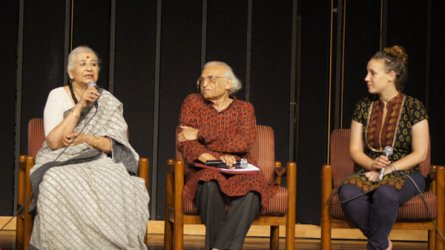 Leela Venkataraman, Dr. Sunil Kothari, Shaked Dagan During an interaction between critic Leela Venkataraman, Dr. Sunil Kothari, Shaked and Sangita, various aspects of the performance were brought out. Contemporary western dance is not strictly codified. It does not have a history, narrative or idiom. It is open to interpretation by the audience and improvisations by the dancer. The performance was woven around the dancers’ memories, feelings and fears. The mechanical movements in a pattern were to show the repetitiveness of daily chores. 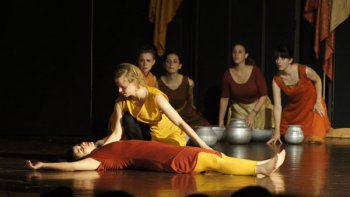
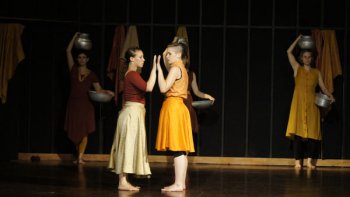
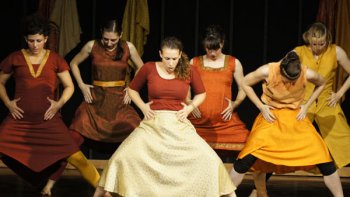
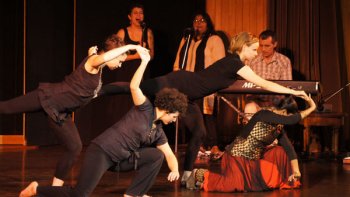
The first performance of the evening was ‘Kindling’ which was done by all the seven ladies incorporating their own style and story. They began with a semi lying down position as if sleeping and when dawn breaks, with the chanting of ‘Om’ they wake up and move in individually different dance moves. They were making a babbling sound. With the song “You make my heart sink” they came together and started parading around. Suddenly they all stopped with blank expressions and one of them began her story about coming to India and following her mother’s map which was forty years old, when her mother had come to India. After some more dancing moves and somersaults, the next story began. One of the dancers was quizzed about what she likes to hear. It is not the noise of traffic jams and cities but the sounds of rivers, rain and heart. On being asked what she judges, she said she judges herself, people around her and her environment. She does not deliberately hurt somebody physically but her words may unknowingly do so. She takes responsibility for herself. She is just playing human and living her life. All this was being asked while the dancer was gesturing and dancing. In the next act, the dancers carried pots on their heads. They poured water in an open vessel and washed their faces and drank from it. Then they poured the water back. Two dancers coordinated their hip movements with the motion of the pot, while one of them was sweeping the floor. The next song was “I am the stone” sung live. The last line said, “This is where I want to be, nothing will move me.” The dancer enacted the song while the rest washed the feet of one of them. The piece involved many rhythmic synchronized movements. One of them stated that she thought she was just a boy until she grew hips. The narrative moved further and one of them started talking about the journey to India. “I am all alone in this place; my mother died a painful death due to cancer five years ago. She’s never coming back. I have seen her slip away piece by piece. When she was sick, I became the adult, and she the child. But I wanted to be strong for her. Last time we brought her home, she was crying. She wasn’t going bravely, and I was ashamed of it. I came to India and scattered her ashes. But I am all alone, a scared child, and it’s me just following an old map. Basically, we are all alone with our fears.” The song in the background was ‘Wonderful Fantasy,’ the dancers again using pots of water. They poured water into each other’s pots. Finally, they all dipped the pieces of cloth hanging on the stage into the water vessels, wringing them and banging them with all their might as if washing them. The vocabulary of dance was totally western contemporary, with lifts, stretches, aerobic and aesthetic moves. All the seven dancers, though from different parts of the world and with different styles, integrated their moves and stories into the choreography. Though there was no single narrative or theme to the dance, the interpretation was left totally to the audience. The moves implied feminine chores like sweeping and washing and carrying pots. Some of the steps were mechanical and repeated. The pots and the water probably signified something that they were sharing, like an emotion or a feeling. In the end, banging the cloth showed frustration and probably, spraying the audience with the water was an act of involving them too. Though all individual gestures did not portray anything specific, the entire narrative suggested a kindling of empowerment and hope, a need to scream out to the world. In their loneliness too, there was a feeling of togetherness and sharing. The music scores had touching lyrics and the music was very sensitively created. 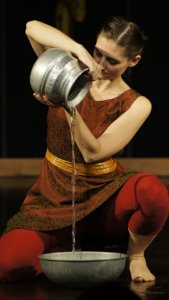 In the next piece ‘Free Soul,’ the innate freedom of the soul was explored. The soul is a captive of the body, mind and intellect. Death is the birth of liberation of the soul from these. For the portrayal of the theme, the three contemporary dancers dressed in black, depicted the body, mind and intellect. Sangita Chatterjee, dressed in black and red, was the soul. The pertinent question that the soul asks is, “When the heart starts beating, the mind starts thinking, and the intellect starts calculating, will I be alive?” The three dancers depicted the caged soul who is following them. And then they went limp to show death. Sangita, who had changed into a red skirt, did the chakkars to show the liberation of the soul. In death, the soul emerges. “I found myself, I can rage like fire, flow like the wind, I am omnipresent, I am the free soul.” The dancers in their own styles were excellent, and the music score by Mahua was really melodious. Shveta Arora is a blogger based in Delhi. She writes about cultural events in the capital. |